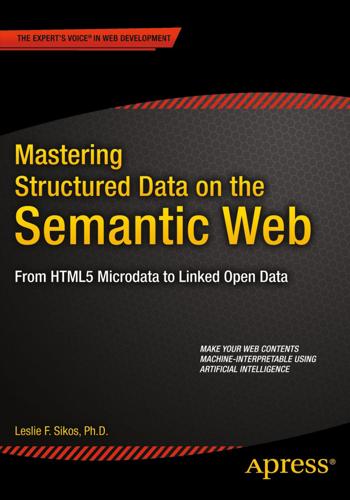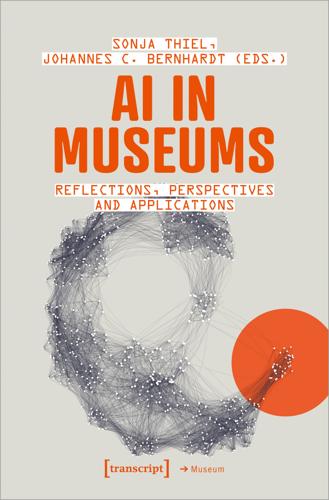Wikidata
description: a free knowledge base that can be read and edited by humans and machines alike, linked to Wikipedia and other Wikimedia projects
3 results

Mastering Structured Data on the Semantic Web: From HTML5 Microdata to Linked Open Data
by
Leslie Sikos
Published 10 Jul 2015
birth < "1901-01-01"^^xsd:date) . } ORDER BY ?name Wikidata Wikidata is one of the largest LOD databases that features both human-readable and machine-readable contents, at http://www.wikidata.org. Wikidata contains structured data from Wikimedia projects, such as Wikimedia Commons, Wikipedia, Wikivoyage, and Wikisource, as well as from the once popular directly editable Freebase dataset, resulting in approximately 13 million data items. In contrast to many other LOD datasets, Wikidata is collaborative—anyone can create new items and modify existing ones. Like Wikipedia, Wikidata is multilingual. The Wikidata repository is a central storage of structured data, whereby data can be accessed not only directly but also through client Wikis.
…
The Wikidata repository is a central storage of structured data, whereby data can be accessed not only directly but also through client Wikis. Data is added to items that feature a label, which is a descriptive alias, connected by site links. Each item is characterized by statements that consist of a property and property value. Wikidata supports the Lua Scribunto parser extension to allow embedding scripting languages in MediaWiki and access the structured data stored in Wikidata through client Wikis. Data can also be retrieved using the Wikidata API. GeoNames GeoNames is a geographical database at http://www.geonames.org that provides RDF descriptions for more than 7,500,000 geographical features worldwide, corresponding to more than 10 million geographical names.
…
Some datasets provide a SPARQL endpoint, which is an address from which you can directly run SPARQL queries (powered by a back-end database engine and an HTTP/SPARQL server). 62 Chapter 3 ■ Linked Open Data Frequently Used Linked Datasets LOD datasets are published in a variety of fields. Interdisciplinary datasets such as DBpedia (http://dbpedia.org) and WikiData (http://www.wikidata.org) are general-purpose datasets and are, hence, among the most frequently used ones. Geographical applications can benefit from datasets such as GeoNames (http://www.geonames.org) and LinkedGeoData (http://linkedgeodata.org). More and more universities provide information about staff members, departments, facilities, courses, grants, and publications as Linked Data and RDF dump, such as the University of Florida (http://vivo.ufl.edu) and the Ghent University (http://data.mmlab.be/mmlab).

AI in Museums: Reflections, Perspectives and Applications
by
Sonja Thiel
and
Johannes C. Bernhardt
Published 31 Dec 2023
The comparative approach to the various countries and regions took into account the relevant geopolitical and economic dispositions as well as the different types of museums and possible ethical implications. In what follows, this paper provides a representative snapshot of the current state of research, thus painting a sample picture of AI roll-out in museums world1 https://www.wikidata.org/wiki/Wikidata:WikiProject_Museum_AI_projects. 132 Part 2: Perspectives wide. This review of research from the field was the starting point for the seminar to comprehensively compile data and cases regarding the way AI is being deployed in museums the world over. An outline of the extensive mapping that was then conducted for each continent will add to this presentation of research.
…
To adapt the original BERT model for historical texts containing OCR errors, an unsupervised pre-training was done using a selection of 2,333,647 German-language pages from the SBB’s digitized collections, followed by additional supervised training on openly available gold-standard data for NER (Labusch/Neudecker/Zellhöfer 2019). Furthermore, to disambiguate the entities recognized and link them to authority data (in this case, Wikidata QIDs), knowledge bases were constructed using Wikipedia and Wikidata for German, French, and English, and a purpose-trained BERT context disambiguation model was developed (Labusch/Neudecker 2020) that decides for a given entity whether and which QID should be linked, based on the local context and a comparison with the knowledge bases.
…
This collection data is of great value to AI development, as generations of curators have worked on the quality of object descriptions and scholarly descriptions of context or related classification systems. Ideally, this information is stored in a machine-readable collection management system and includes qualitycontrolled metadata and standard data or authority files. The collection data is, moreover, linked to high-level ontologies, vocabularies, or thesauri systems such as AAT, GND, Geonames, Wikidata, or ICONCLASS, which ensure the correct use of terms and provide additional context. These sources of knowledge representation provide a high-quality source for machine learning tasks, but so far nevertheless seem to be underrated. At the same time, the efforts to transfer formats and facilitate communication between domain experts and data scientists and developers should also not be underestimated.

This Is for Everyone: The Captivating Memoir From the Inventor of the World Wide Web
by
Tim Berners-Lee
Published 8 Sep 2025
So ask the agent what the largest city in the American Midwest was, and it could use the encoded facts to give you an answer! To do so, W3C created a language called the Resource Description Format, or RDF. Starting with this language for simple facts, we began to build massive public data encyclopaedias. If you look at locations like WikiData and various public databases, most of it is mere facts – just gazillions of them. RDF gave us a clean and elegant way to represent these facts. Unfortunately, for reasons that remain a bit mysterious to me, Microsoft viewed RDF with deep suspicion. It was very negative about RDF, or anything built on it, and Microsoft managers made it clear to employees that talking about RDF internally would not lead to a promotion.
…
R. ref1 touchscreens ref1 toxicity of the web ref1, ref2, ref3, ref4 TPAC (Technical Plenary Advisory Committee) conferences ref1 trains ref1 Transactions on Computer Systems (journal) ref1 transatlantic cables ref1 transclusion ref1 transformers ref1 transistors ref1 travel agencies ref1, ref2 tree structures ref1, ref2, ref3, ref4 trust ref1, ref2, ref3 TTL chips ref1 Tunisia ref1, ref2 Turdean, Timea ref1 Turing, Alan ref1, ref2, ref3 Turing Prize ref1, ref2 Turing Test ref1, ref2 23andMe ref1 Twitter ref1, ref2, ref3 2001: A Space Odyssey (film, 1968) ref1 U2 ref1 Uber ref1, ref2 Uganda ref1 UK Brexit ref1 Data Use and Access Bill ref1 trust ref1 Unitarian Universalists ref1 United Nations (UN) ref1, ref2 universal access ref1, ref2, ref3, ref4, ref5, ref6, ref7 universality ref1, ref2 Unix ref1, ref2, 118n, ref1 Unix X Windows ref1 urban design ref1 URLs (Uniform Resource Locators) ref1, ref2, ref3 USA 2016 election ref1 data regulation ref1 open data legislation ref1 PACER ref1 Telecommunications Act 1996 ref1 trust ref1 Usenet ref1, ref2, ref3, ref4 van der Hiel, Amy ref1 van Rossum, Guido ref1, ref2 Vatican ref1, ref2 Verisign ref1 Vezza, Al ref1, ref2, ref3 videoconferencing ref1, ref2, ref3, ref4 videos ref1 ViolaWWW ref1, ref2 viral content ref1 Virtual Library ref1 virtual reality ref1 Visual Display Units ref1 VRML (Virtual Reality Markup Language) ref1 W3C see World Wide Web Consortium Wales ref1 Wales, Jimmy ref1 wallets ref1 see also data wallets; PODS Wanamaker, John ref1 Wayback Machine ref1 Wayve ref1 wearables ref1 web see World Wide Web ‘web 2.0’ ref1 web applications ref1 web clients ref1, ref2 Web Foundation Africa ref1, ref2 closure ref1 Contract for the Web ref1, ref2, ref3 foundation ref1 fundraising ref1 mission ref1, ref2, ref3, ref4 strategy ref1 structures ref1 web anniversary ref1 Web Index ref1 Web Index ref1 Web Science Trust ref1 Web Summit conference, Lisbon ref1, ref2 Web3 ref1 webrings ref1 WebRTC (Web Real-Time Communication) ref1 webs ref1, ref2, ref3 websites early development ref1 first ref1 Wei, Pei-Yuan ref1, ref2 Weigant, Dietrich ref1 Weinstein, Mark ref1 Weitzner, Danny ref1, ref2, ref3 Wells, Pete ref1, ref2 Wequassett Resort, Cape Cod ref1 WHATWG (Web Hypertext Application Technology Working Group) ref1 White, E. B. ref1 Wide Area Information System (WAIS) ref1 widgets ref1 Wiki pages ref1 WikiData ref1 Wikipedia ref1, ref2 Willets, David ref1 Williams, David ref1, ref2, ref3 Windows ref1, ref2, ref3, ref4 windsurfing ref1, ref2 Wizard’s Workshop ref1, ref2 Wolfram, Stephen ref1 women, developing countries tech empowerment ref1 Wood, Gavin ref1 World Wide Web anniversaries ref1, ref2 error codes ref1 first conference demonstration ref1 first International Conference ref1, ref2 first web page ref1 formalization of protocols ref1 governance see World Wide Web Consortium growth ref1, ref2, ref3, ref4, ref5, ref6 HTTP and URL development ref1 hyperlink concept ref1 images, IMG tag ref1 intellectual property rights ref1, ref2 ‘Mesh’ memo ref1, ref2, ref3 Middle Earth map ref1 name ref1 server software ref1 web clients ref1, ref2 see also browsers; websites World Wide Web Consortium (W3C) accessibility ref1, ref2 apps ref1 CSS standard ref1 data standards ref1 foundation ref1, ref2 HTML and WHATWG ref1 HTTPS standard ref1 internal platforms ref1, ref2 Mobile Web Initiative ref1, ref2 motto ref1 organization and structure ref1, ref2 patent policy ref1 PNG (Portable Network Graphics) ref1 RDF (Resource Description Format) ref1 satellite offices ref1, ref2, ref3 Tim Berners-Lee steps down ref1 TPAC (Technical Plenary Advisory Committee) conferences ref1 WebRTC (Web Real-Time Communication) ref1 XML standard ref1 World Wide Web Worm ref1 WorldWideWeb.app ref1, ref2, ref3 Wozniak, Steve ref1 Wright, Jesse ref1, ref2 Writers ref1, ref2 Wu Zhaohui ref1 X ref1 X Consortium 118n, ref1 Xanadu ref1, ref2 Xerox Alto ref1 Xerox PARC ref1, ref2, ref3 Xiaomi ref1 XML (Extensible Markup Language) ref1, ref2 Yahoo!